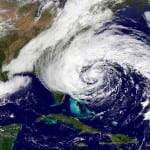 Today is the one-year anniversary of Hurricane Sandy. Without descending into the science of it all, we can all agree that natural disasters of all sorts have slammed us before, and will slam us again in the future. That’s a fact of life, and one that communicators must be prepared to respond to, as a part of their overall crisis management planning.
Today is the one-year anniversary of Hurricane Sandy. Without descending into the science of it all, we can all agree that natural disasters of all sorts have slammed us before, and will slam us again in the future. That’s a fact of life, and one that communicators must be prepared to respond to, as a part of their overall crisis management planning.
While there is no one-size-fits-all approach to crisis management during natural disasters, these three essential steps from Jennifer Miller, senior counselor at Denver-based communications firm Rockford Gray, and a specialist in crisis management planning, can help you build a solid foundation for your internal and external messaging during natural disasters.
- Train your team before a natural disaster hits: Good crisis training involves role playing, which can reveal flaws in your communications planning. Crisis training is where you discover your own vulnerabilities and find your voice. If you send an untrained crisis team up against reporters, the result can be a PR disaster.
- Determine who has been affected in your organization and reach out to them: The best question to ask is, “What is the right thing to do?” You might not be able to make things right, but you can offer services and provide comfort. In a crisis, more than ever, you need to maintain your credibility. Don’t speculate, never lie and offer help.
- Engage the news media. Issue a buy-time statement about the effects of a natural disaster on your organization and its employees immediately. Say, “I don’t have enough information to answer your questions; our spokesperson will be back in touch with you once we have information that we can confirm.” The buy-time statement nets you about 15-60 minutes. When your spokesperson is ready, you should issue high-level statements that address the dimensions of the crisis, but leave no room for speculation. A strong message is: “Our focus right now is taking care of the needs of those who have been impacted by this event.”
This article was adapted from PR News' Crisis Management Guidebook, Vol. 6.
Follow PR News: @PRNews
